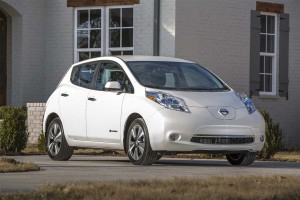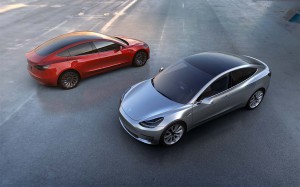
A creep upward in gas prices may be stimulating interest in EVs. A new survey shows some parts of the country are curious.
With the holiday weekend upon us, the inevitable creep of rising gas prices is beginning to force some motorists to wonder: when will be back to $4 a gallon gasoline? This kind of burbling concern can only make EV automakers giddy with anticipation.
In fact, on America’s coasts, the demand for electric vehicles is still surprisingly high, even in an era of $2.28 a gallon gasoline.
A recent survey by the Union of Concerned Scientists revealed more than half of Californians are likely to consider an electric vehicle as their next vehicle and in the Northeast, 35% of owners are likely to have an EV in their ranks of possible purchases next, in spite of the limitations that cold weather places on electric vehicles.
“California’s blend of car culture, technology incubation, and environmental consciousness create potential for huge growth in EV sales.” said Shannon Baker-Branstetter, policy counsel for Consumers Union. “There’s a real market opportunity for automakers to offer electric vehicles to the millions of California consumers who are ready to go electric.”
Despite a reputation for behind an EV haven, plug-in electric vehicle sales in California today represent only 3% of the new vehicle market. But they have plenty of options with more than 20 vehicle models available from manufacturers.
(Hyundai aiming for No. 2 in green vehicle market. For more, Click Here.)
In the Northeast, the percentage is much smaller, in part because there are just few options to choose from since the beginning of 2016, only 1,744 new plug-in vehicles were available on Edmunds.com in and near New York City, and only 733 vehicles available on in the Boston region were plug-in EVs. Those numbers are five times higher in California.
While the availability of vehicles is dramatically different between the two areas, the interest in electric vehicles are much more aligned. More than 65% of Californians are interested in EVs and 55% of Northeasterners are as well.
Additionally, 56% of Golden State residents want every automaker to offer an electric vehicle and that number drops only slightly in the Northeast to 52%. In both instances, more than 40% of drivers wouldn’t see any change in their daily driving habits if they purchased an electric vehicle.
While range anxiety is one of the concerns of potential EV buyers, a lack of information about the benefits and real-world performance of the vehicles was cited as a problem. Additionally, automakers and state officials can also do a better job of letting drivers know about existing EV incentives.
(Click Here for details about New Zealand spending $4M to foster EV use.)
More than three quarters of California drivers didn’t know the state offers any plug-in electric vehicle incentives, and almost 80% weren’t aware of the federal EV tax credit. Together, these programs can lower the purchase price of a plug-in vehicle by over $10,000. Education about incentives is especially important as nearly 13% of respondents identified costs as a main barrier to purchasing an EV.
However, the biggest driver of sales of EVs – or any fuel efficient car for that matter – is simply the price of gasoline. Forecasts by GasBuddy.com don’t paint a rosy picture for EV makers in 2016. Analysts expect the high water market for the national average gas price to top out just shy of $2.70 a gallon, which is unlikely to put a big charge in EV sales.
The typical rise in prices as the summer driving season approaches will persist, but the increase isn’t expected to stick past the warmer months.
(Tesla may need $2B to get affordable Model 3 off the ground. Click Here for the story.)
“Gas prices always go up for the summer, but we’re still talking oil inventories that are just in excess of what we’ve ever seen,” said Patrick DeHaan, head petroleum analyst at GasBuddy.com.

